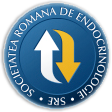
- Login
- Register
- Home/Current Issue
- About the journal
- Editorial board
- Online submission
- Instructions for authors
- Subscriptions
- Foundation Acta Endocrinologica
- Archive
- Contact
 Romanian Academy
Romanian Academy
 The Publishing House of the Romanian Academy
The Publishing House of the Romanian Academy

ACTA ENDOCRINOLOGICA (BUC)
The International Journal of Romanian Society of Endocrinology / Registered in 1938in Web of Science Master Journal List
Acta Endocrinologica(Bucharest) is live in PubMed Central
Journal Impact Factor - click here.

-
Endocrine Care
Yalin GY, Uzum A, Selcukbiricik O, Yegen G, Gul N, Barbaros U, Yarman S
Management of Silent Cystic Pheochromocytomas with Benign or Malignant HistologyActa Endo (Buc) 2015 11(2): 195-201 doi: 10.4183/aeb.2015.195
Abstractabdominal cystic lesions should include investigation of cystic pheochromocytomas. To date only a few cases of purely cystic pheochromocytoma have been reported in the English literature. Aim. To present the management in four cases of silent pheochromocytomas patients who presented with pure or partially cystic abdominal lesions with benign (n:3) and malignant characteristics (nonspecific neuroendocrine tumor) (n:1) in histological evaluation. Results. Resection of the tumor is considered the primary treatment option in the management of pheochromocytoma, and preoperative preparation with alpha and beta antagonists is crucial in order to avoid precipitation of hypertensive crisis during surgical procedures. The absence of clinical symptoms and lack of typical radiological features may complicate the diagnosis of pheochromocytoma resulting with increased mortality and morbidity during surgery. Conclusion. Asymptomatic pheochromocytomas are rare and they are responsible for approximately 5% of adrenal incidentalomas. These lesions may be referred to surgery as clinically nonfunctional adrenal adenomas. -
General Endocrinology
Sagun G, Mesci B, Oguz A
Does Lipoprotein-Associated Phospholipase A2 Level Correlate with Insulin Resistance States in Metabolic Syndrome, an Early Atherosclerotic Phase?Acta Endo (Buc) 2011 7(2): 199-208 doi: 10.4183/aeb.2011.199
AbstractBackground. Lipoprotein-associated phospholipase A2 is a novel inflammation marker that generates pro-inflammatory\r\nmolecules from oxidized LDL.\r\nAim. We aimed to investigate its role in individuals with insulin resistance and metabolic syndrome which is representative of early stages of atherosclerosis.\r\nMethods. We evaluated 114 subjects with metabolic syndrome in a cross-sectional pattern. Waist circumference was measured. Fasting plasma glucose, total cholesterol,\r\ntriglycerides, high-density lipoprotein cholesterol (HDL-C), LDL-cholesterol (LDLC), fasting insulin were measured by standard assays. Oral glucose tolerance test was applied\r\nto patients with fasting blood glucose < 126 mg/dL. Patients were classified to tertiles according to their insulin resistance states. Lp-PLA2 mass levels were measured.\r\nResults. There was a correlation between hypertension and HOMA tertiles; HDL-C, hypertriglyceridemia, hyperglycemia\r\nwere not correlated with HOMA tertiles (p = 0.024, p=0.66, p=0.66, p = 0.18, respectively). We cannot find any association between HOMA tertiles and Lp-PLA2 levels. Triglyceride was negatively correlated with Lp-PLA2.\r\nConclusion. Lp-PLA2 is not correlated with insulin resistance in subjects with metabolic syndrome. -
Case Report
Balmes E, Burcea A, Belgun M, Alexandrescu D, Badiu C
Marine-Lenhart syndrome. Case report and literature reviewActa Endo (Buc) 2007 3(2): 201-208 doi: 10.4183/aeb.2007.201
AbstractGraves’ disease and toxic nodular goiter both cause thyrotoxicosis by different pathophysiological mechanisms. Rare cases associates both etiologies are undertaken by the diagnosis of Marine-Lenhart syndrome. A woman aged 38, with Graves’ unilateral ophthalmopathy and a solitary, echo-dense thyroid nodule, developed thyrotoxicosis within the following 3 months. The diagnosis was certified by suppressed TSH (0.002 mIU/L), high fT4 (5.6 ng/mL) associated with elevated TRAb (3.5 IU/L), moderately elevated TPOAb (63.1 IU/mL) and ATGl (248 IU/mL). The thyroid radioiodine scan revealed a solitary hot nodule in the left lobe with an elevated radioiodine uptake. Methyl prednisolone was started by oral and pulse therapy, with stabilization of ophthalmopathy within 5 months. After four months with antithyroid drug therapy followed by radioiodine (25 mCi 131I), the thyroid scan revealed diffuse radioiodine uptake. Nine months after radioiodine therapy, the patient was in clinical and biochemical hypothyroidism and substitutive therapy was instituted. A broad literature review suggested that in such rare cases, underlying autoimmune mechanisms might be involved in the development of thyroid nodules with variable function and proliferation activity. -
Endocrine Care
Gunen Yilmaz S, Bayrak S
Determination of Mandibular Bone Changes in Patients with Primary Hypothyroidism Treated with Levothyroxine SodiumActa Endo (Buc) 2023 19(2): 201-207 doi: 10.4183/aeb.2023.201
AbstractBackground. This study aimed to assess fractal dimension (FD) and the radiomorphometric indexes on the digital panoramic radiography (DPR) of patient with primary hypothyroidism receiving levothyroxine sodium replacement therapy. Methods. A total of 115 subjects were included in this cross sectional retrospective study. According to the results of the thyroid function tests, the subjects were divided into two groups as primary hypothyroidism (levothyroxine sodium replacement therapy given), (n = 57) and the healthy control group (n = 58). The fractal dimension (FD), panoramic mandibular index (PMI), mandibular cortical width (MCW), gonial index (GI) and mandibular cortical index (MCI) values of all patients were calculated on DPRs. The statistical analysis of all data was performed with SPSS version 22. Results. The distributions of age and gender in the primary hypothroidism group were similar to control group (p = 0.19 and p = 0.62, respectively). The two groups did not differ statistically significantly in terms of FD, PMI, MCW, GI, and MCI. Conclusion. We determined that mandibular cortical and trabecular bone structure did not significantly differ between healthy individuals and patients receiving drug replacement theraphy due to hypothyroidism, but our results should be further supported with the investigation of clinical parameters. -
Endocrine Care
Gunhan HG, Elbasan O, Imre E, Gogas Yavuz D
Lipodystrophy Frequency According to Insulin Treatment Regimen in Type 2 Diabetic Patients: is Insulin Injection Frequency Matters in Analog Insulin Era?Acta Endo (Buc) 2022 18(2): 202-208 doi: 10.4183/aeb.2022.202
AbstractObjectives. We aimed to determine lipodystrophy frequency according to insulin treatment regimen and insulin injection frequency in type 2 diabetic patients. Methods. A total of 345 type 2 diabetic patients under insulin treatment for at least one year were included in this cross-sectional study. Patients were examined for presence of lipodystrophy, insulin injection frequency and dosage. Lipodystrophy was evaluated with visual inspection and palpation of all injection sites. Patients were evaluated into three categories according to daily insulin dose requirement: Group 1= Standard-dose insulin users 0.6 U/ kg/day; Group 2= Medium-dose insulin users 0.61-1.9 U/kg/ day, Group 3= High-dose insulin users ≥2 U/kg/day. Results. Lipodystrophy was seen in 28% of the patients. Lipodystrophy was significantly higher in group 3. There was no significant difference between the groups in terms of lipodystrophy size. Duration of insulin treatment, daily total insulin dose, daily insulin dose per weight and number of daily insulin injections were significantly higher in the group with lipodystrophy. Daily injection number of long-acting, rapidly-acting analog and total insulin injections were significantly higher in group 3 than group 1 and 2. Number of daily insulin injections and lipodystrophy frequency were significantly higher in basalbolus insulin user group. Multivariate analysis showed that insulin injection frequency is the independent risk factor for lipodystrophy. Conclusion. Lipodystrophy is still a clinical problem in patients with high-dose insulin requirement and frequent insulin injections. Reducing daily insulin requirement and daily number of injections should be given priority in the management of patients to prevent the development of lipodystrophy. -
Endocrine Care
Aydin C, Ersoy R, Ozdemir D, Cuhaci N, Arpaci D, Usluogullari CA, Ustu Y, Baser H, Dirikoc A, Cakir B
Comparison of Growth Hormone Suppression Response after Oral and Intravenous Glucose Tolerance Tests in Healthy AdultsActa Endo (Buc) 2015 11(2): 202-207 doi: 10.4183/aeb.2015.202
AbstractObjective. Personal discrepancies in gastrointestinal physiology might influence responses to GH suppression during OGTT. We aim to compare growth hormone (GH) response during oral glucose tolerance test (OGTT) and intravenous glucose tolerance test (IVGTT). Methods. Data of 18 healthy volunteers were analyzed in the study. Subjects were firstly evaluated with standard 75-g OGTT. In subjects with serum glucose <100 mg/dL at basal state and <140 mg/dL at 120th minute of oral loading, IVGTT was performed after at least 3 days. Serum glucose, insulin and GH levels were measured during two tests. Results. Basal GH levels had a wide distribution ranging from 0.00005 μg/L to 0.768 μg/L (median 0.0145 μg/L). Mean nadir GH level during OGTT was obtained at 60th minute and it was 0.0376 μg/L(range 0.00011-0.387, median 0.0016 μg/L, SD: 0.095, SEM: 0.038). Nadir GH level during IVGTT was observed at 10th minute and it was 0.112 μg/L(range 0.0005-0.770 μg/L, median 0.0053 μg/L, SD: 0.242, SEM: 0.057). There was a statistically significant difference between nadir GH levels obtained during IVGTT and OGTT (p=0.028). Conclusions. We found that mean nadir GH level was significantly higher during IVGTT in healthy subjects. This is a preliminary study and further large scale studies are required to suggest that IVGTT may be used in the diagnosis and follow-up of patients with acromegaly as an alternative to or instead of OGTT. -
Endocrine Care
Mesci B, Celik S, Coksert Kilic D, Tekin M, Oguz A
Refined carbohydrate restricted diet versus conventional diabetic diet in typw 2 diabetic patients treated by insulinActa Endo (Buc) 2010 6(2): 203-209 doi: 10.4183/aeb.2010.203
AbstractIntroduction. Our aim was to compare the effects of conventional diabetic diet with refined carbohydrate restricted diet on glycemic and metabolic parameters in type 2 diabetic patients who were treated by insulin.\r\nMaterials and methods. A hundred type 2 diabetic patients treated by insulin, randomized into two groups. The first group (n:50) was given a low refined carbohydrate\r\ndiet , the second group was given conventional diabetic diet. Metabolic parameters were evaluated at the beginning and at the end of the 3rd month of randomization.\r\nResults. There were no statistically significant weight change differences between groups (p=0,237). Changes in the HbA1C level (Δ HbA1C) in the basal insulin-refined\r\ncarbohydrate restricted diet group, in the basal insulin-conventional diet group and in the premixed insulin-conventional diet group were -1.22% (p<0.001), -0.51% (p=0.13) and -0.66%(p=0.155), respectively. Symptomatic hypoglycemic episodes were reported only by the\r\npatients in premixed insulin group.\r\nConclusion. A diet rich in nutrients with sole exclusion of refined carbohydrates has been shown to be as effective as a stricter conventional diet and therefore it has to be\r\nconsidered as a preferable treatment option. -
Endocrine Care
Kostek M, Aygun N, Unlu MT, Uludag M
Interrelation between Preoperative Tests, Intraoperative Findings and Outcomes of 99M-Technetium-Sestamibi Scan in Primary HyperparathyroidismActa Endo (Buc) 2023 19(2): 208-214 doi: 10.4183/aeb.2023.208
AbstractContext. Primary hyperparathyroidism is one of the most common endocrinological disorder and surgery of parathyroid glands is the main therapy of this disease. Minimally invasive surgery is getting more prominent in these days and its success in parathyroid surgery mostly depends on accuracy of the localization studies. Objective. The aim of this study is to understand the relationship between preoperative biochemical tests, intraoperative findings and Technetium-99mmethoxyisobutylisonitrile (MIBI) scan results. Design. Retrospective clinical study. Subjects and Methods. A total of 185 patients, who have been diagnosed with primary hyperparathyroidism (PHPT) and operated between January, 2010 and October, 2018, were included to the study. Patients with less than 6 months of follow up are excluded from the study. Results. Patients were divided into two groups according to their scintigraphy results; with positive scintigraphy findings as group 1 (n:135) and negative scintigraphy findings as group 2 (n:50). Mean preoperative serum parathyroid hormone (PTH) values were significantly different between the two groups (p<0.02). Mean preoperative serum calcium, creatinine, magnesium, phosphorus, alkaline phosphatase, 25-OH Vitamin D3 levels of both groups were analyzed and there were no statistical differences between the two groups considering these parameters. Also, mean diameter and mean volume of parathyroid adenomas were significantly higher in group 1 (2.1±1.0 cm vs. 1.55±0.72 cm, respectively, p<0.0001; 2.66±5.35 cm3 vs. 1±1.9 cm3, respectively, p<0.0001). Optimal cut-off values of parathyroid adenoma diameter for MIBI scan positivity were 1.55 cm, parathyroid volume for MIBI scan positivity were 0.48 cm3, preoperative serum PTH for MIBI scan positivity were 124.5 ng/L. Conclusions. Preoperative serum PTH levels, diameter and volume of adenomas might be helpful for the prediction of MIBI scan accuracy and possible need of another localization studies. -
Editorial
Popescu-Spineni DM, Guja L, Cristache CM, Pop-Tudose ME, Munteanu AM
The Influence of Endocannabinoid System on Women ReproductionActa Endo (Buc) 2022 18(2): 209-215 doi: 10.4183/aeb.2022.209
AbstractThe discovery of the cannabinoid receptors CB1 and CB2 in 1990 and 1993, respectively, as well as of the two main endocannabinoids, anandamide in 1992 and 2-arachidonylglycerol in 1995, was an important step in identifying the strongest homeostatic system in the human body, namely the endocannabinoid system. Ever since, research has highlighted the crucial part played by this system in all the reproduction stages: folliculogenesis, spermatogenesis, oogenesis, fecundation, transport of the egg through the fallopian tubes, blastocyte implantation and pregnancy progression, as well as its implications in the physiopathology of the reproductive system: in endometriosis, ectopic pregnancy, miscarriage, preeclampsia, endometrial cancer, polycystic ovary syndrome, ovarian cancer. A special attention must be paid to the phytocannabinoids, natural components originating especially from the Cannabis plant inflorescences, whose medical effects are wellestablished nowadays with also acting on the receptors of the endocannabinoid system. The most recent research mainly focuses on the reproductive dysfunctions and disorders of the reproductive tissues, respectively, through its action upon the endocannabinoid system. Medical cannabis is nowadays legalized in more and more countries all over the world. At the same time, recreational cannabis remains one of the most consumed drugs (in Romania the most consumed one by young adults). Therefore, it is mandatory for specialists in obstetrics and gynecology, endocrinology, public health, hygiene or for general practitioners, to permanently update their information on this subject. -
Endocrine Care
Ustun I, Aydin Y, Ary Arduc A, Berker D, Ozuguz U, Yylmaz M, Erden G, Unlu E
Evaluation of atherosclerotic risk factors and carotid intima media thickness in healthy offspring of type 2 diabetic patientsActa Endo (Buc) 2010 6(2): 211-227 doi: 10.4183/aeb.2010.211
AbstractAim is to evaluate atherosclerotic risk factors and carotid intima media thickness [CIMT] in offspring of type 2 Diabetes Mellitus [DM] patients with normal glucose tolerance. Methods. We evaluated 96 offspring of Type 2 DM patients and 39 healthy control who were in similar age, sex and body mass. We measured fasting blood glucose [FBG], postprandial blood glucose [PBG], insulin, uric acid, homocystein, fibrinogen, HOMA-IR, lipid profile, hsCRP, microalbuminuria, glycosylated hemoglobin A1c and CIMT by Doppler ultrasonography. Results. FBG was found higher in study group [p<0.001]. The HOMA-IR was 1.7±0.98 and 1.2±0.58 mg/dL x uUI/mL for study and control group, respectively [p=0.007]. TCholesterol, triglycerides, HDL-C, LDL-C and homocystein levels were not different. HsCRP and fibrinogen levels were higher in study group [p=0.014 and p=0.035, respectively]. Microalbuminuria levels were higher in study group but not significant [p=0.111]. CIMT in study group increased distinctively [p<0,001]. In regression analysis, being in study group causes a significant increase on the mean CIMT level by 0.057 mm [0.029-0.086] Conclusion. Our study demonstrated that various atherosclerotic risk factors are aggregated in offspring of Type 2 DM patients having NGT even before they develop glucose intolerance. Having a diabetic family alone might be effective in developing increased CIMT.